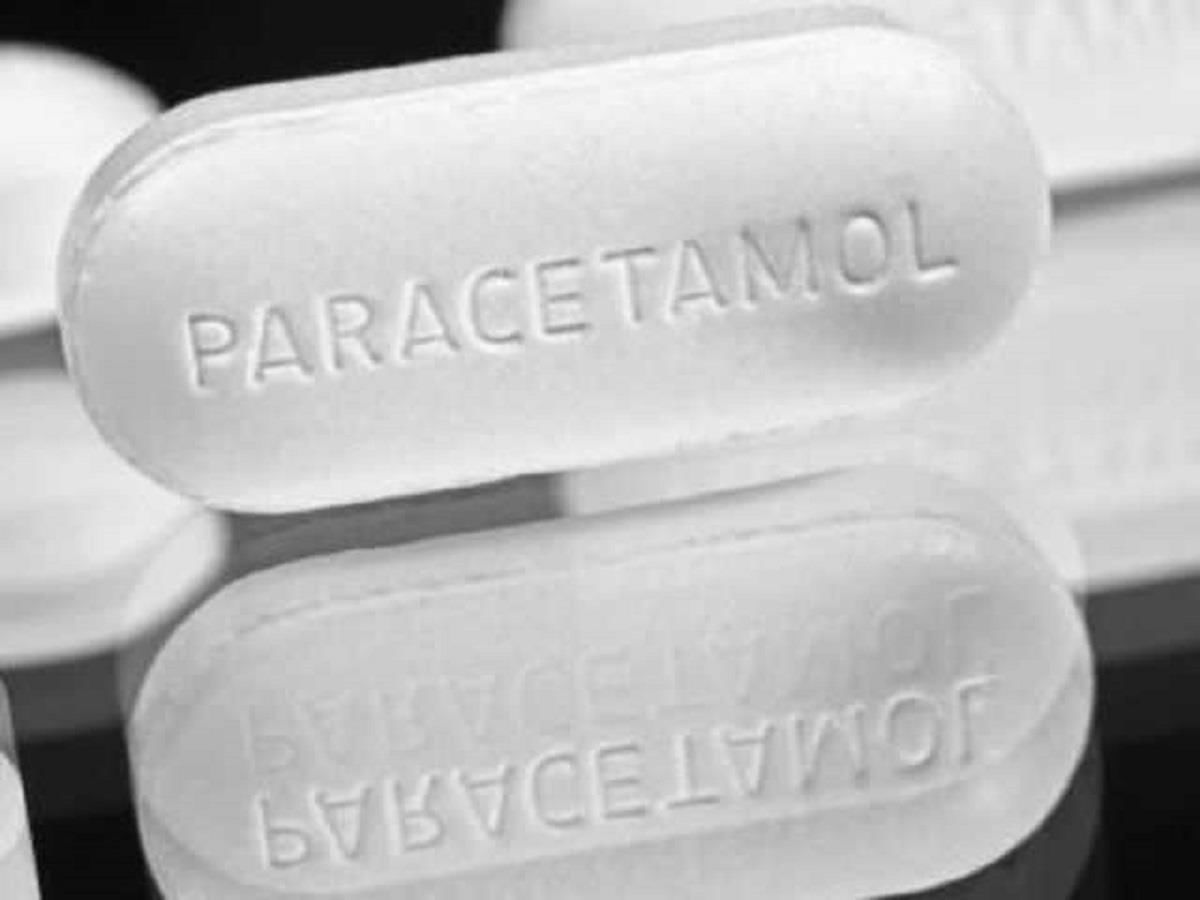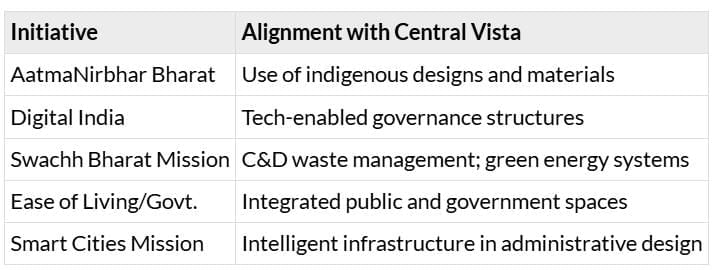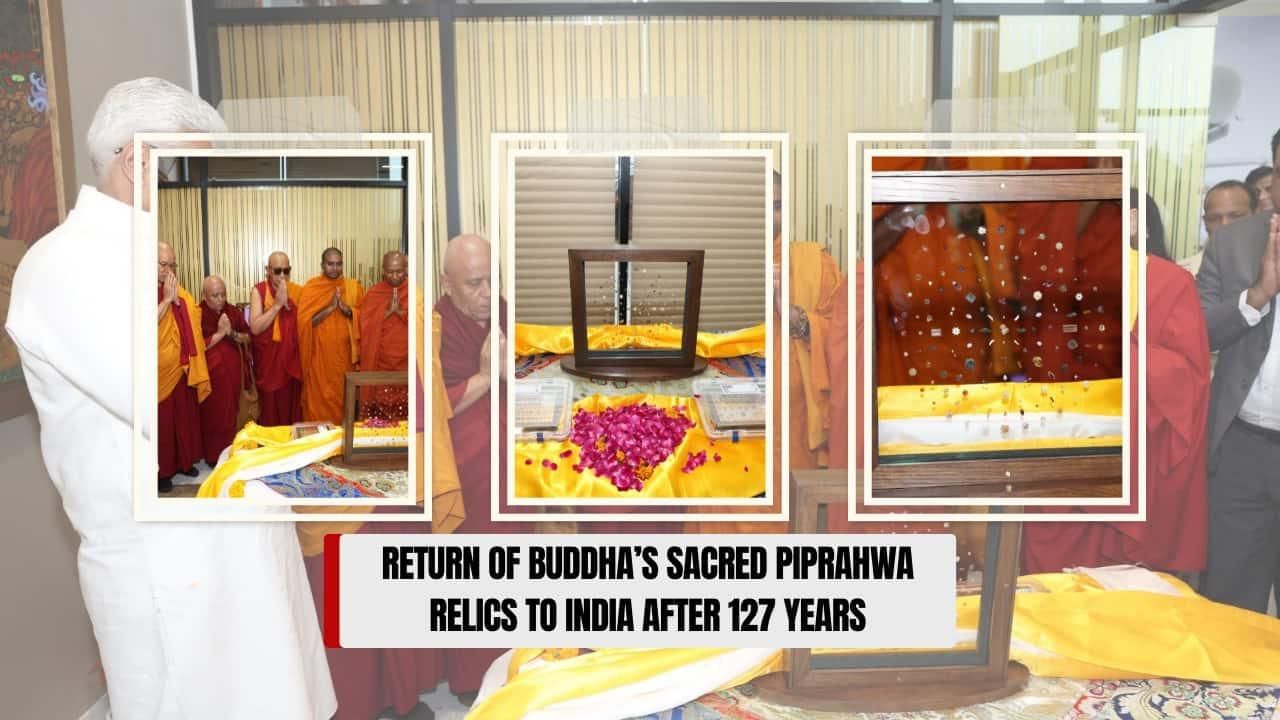UPSC Exam > UPSC Notes > PIB (Press Information Bureau) Summary > PIB Summary - 6th August 2025
PIB Summary - 6th August 2025 | PIB (Press Information Bureau) Summary - UPSC PDF Download
Govt Clarifies: No Ban on Paracetamol, Only Certain Fixed‑Dose Combinations Barred

Background and Current Clarification
- The Ministry of Health and Family Welfare has confirmed that paracetamol is not banned in India.
- However, certain Fixed-Dose Combinations (FDCs) involving paracetamol have been prohibited. This list is publicly available on the Central Drugs Standard Control Organisation (CDSCO) website.
Regulatory Framework on Drug Pricing
- The National Pharmaceutical Pricing Authority (NPPA) oversees pricing under the Drugs (Prices Control) Order, 2013 (DPCO, 2013).
- Scheduled Formulations (e.g., those in the National List of Essential Medicines, NLEM): NPPA fixes a ceiling price, revised annually using the Wholesale Price Index. Manufacturers, importers, and marketers must not exceed this ceiling price (plus applicable taxes).
- New Drugs (e.g., new strengths, dosages, combinations): NPPA sets a retail price specific to the applicant manufacturer, which must be adhered to when marketed.
- Non-scheduled Formulations: Manufacturers may raise MRP by a maximum of 10% annually, and NPPA monitors compliance.
Ensuring Access and Reducing Out-of-Pocket Expenditure
- The Free Drugs Service Initiative under the National Health Mission (NHM) provides funds to states/UTs for free essential medicines at public health facilities.
- Key support includes procurement systems, quality assurance, supply-chain management, prescription audits, grievance redressal, and the Drugs and Vaccine Distribution Management System (DVDMS).
Infrastructure and Logistics
- Essential Medicines Lists suggested for various tiers of government facilities (SHC, PHC, CHC, sub-district and district hospitals), with state-level flexibility.
- Medical Stores Organisation (MSO) and Government Medical Store Depots (GMSDs) maintain rate contracts for 697 drug formulations.
- Over 1,152 indenting entities (hospitals, PHCs) can place orders via the MSO-DVDMS portal up to four times per year.
Analysis and Key Insights
- Rumour management: The government’s proactive clarification highlights the significance of official communication in addressing misinformation.
- Pricing regulation: The multi-tiered pricing framework aims to balance affordability while protecting innovators.
- Health coverage: Strengthening institutional capacity (DVDMS, MSO rate contracts) ensures a continuous supply of essential medicines, crucial for Universal Health Coverage (UHC) goals and reducing Out-of-Pocket Expenditure (OOPE).
- Federal flexibility: Allowing state-level adaptation of the essential medicines list enables responsiveness to local disease burdens.
Way Forward
- The clarification aims to strengthen trust in public health institutions and counter misinformation.
- The existing pricing structure and procurement technologies (DVDMS, MSO) are designed to promote equitable access to medications.
- Next Steps: Encourage the comprehensive rollout of DVDMS to peripheral health centres, conduct regular audits of drug availability, and enhance public awareness regarding regulatory safeguards against drug misuse and shortages.
Central Vista Project

Overview of Central Vista Redevelopment
Context & Background
- Launched: 2020
- Location: New Delhi (stretching from India Gate to Rashtrapati Bhavan)
- Executing Agency: Central Public Works Department (CPWD)
- Architect: HCP Design Planning & Management Pvt. Ltd. (led by Bimal Patel)
- Supervising Ministry: Ministry of Housing and Urban Affairs
- Estimated Cost: Approximately ₹13,500 crore (as per public statements)
Constitutional & Governance Significance
- Democratic Symbolism: The New Parliament building is seen as the "temple of democracy." The project shifts the symbolism from Rajpath, which represented colonial authority, to Kartavya Path, focused on citizen-centric governance.
- Governance Rationality: The integration of 51 Ministries into 10 Common Central Secretariat (CCS) buildings enhances inter-ministerial coordination by eliminating dispersed office spaces rented across Delhi. The project also promotes e-governance through technology-enabled modular buildings.
Key Infrastructure Components

Administrative Gains
- Efficient Resource Use: The project is expected to reduce the annual expenditure on government building rentals by over ₹1,000 crore per year.
- Faster Decision-Making: The close physical proximity of ministries is anticipated to enhance synergy and productivity, leading to quicker decision-making processes.
- Digital Governance Hub: The new buildings are equipped with smart technology, high-speed networks, and robust security systems, promoting digital governance.
Environmental Impact & Sustainability
- Green Features: The project plans to plant 40,573 trees without cutting any existing trees. The redevelopment of Kartavya Path has already added 197 new trees, increasing the total from 3,890 to 4,087. Additionally, Construction and Demolition (C&D) waste will be recycled for material use.
- Energy Efficiency: Kartavya Bhawan is expected to save 30% energy and generate 5.34 lakh kWh annually. The project also promotes non-motorised transport and integrates public transport.
- EIA Compliance: All sub-projects have been cleared through rigorous Environmental Impact Assessments (EIA).
Cultural & Social Benefits
- Public Space Expansion: The project includes the redesign of public spaces such as the National Museum, Indira Gandhi National Centre for the Arts (IGNCA), lawns, and the India Gate plaza for public use.
- Democratisation of Space: Around 80,000 square meters of historic office space will be repurposed for public use, promoting the democratisation of space.
- Tourism & Heritage: The redesigned Kartavya Path will enhance tourism by integrating pedestrian walkways and restoring the canal, covering a stretch of 16.5 km.
Economic & Strategic Dimensions
- ‘Made in India’ Focus: The project emphasises the use of indigenous materials and crafts, boosting local artisans and Micro, Small and Medium Enterprises (MSMEs).
- Employment Generation: The project is expected to create thousands of direct and indirect jobs in construction, design, and engineering sectors.
- Long-Term Fiscal Prudence: The project aims to cut high maintenance and rental costs associated with outdated buildings, promoting long-term fiscal prudence.
Criticism & Debates
- Timing Criticism: Some civil society groups have criticized the project for being launched during the COVID-19 pandemic, deeming it a "misplaced priority."
- Transparency Issues: There are ongoing debates regarding the lack of Parliamentary approval and limited public consultation in the project's planning and execution.
- Heritage Conservation vs Modernisation: Concerns have been raised about the impact of the project on the historical character of Lutyens’ Delhi and the balance between heritage conservation and modernisation.
Alignment with Key Government Initiatives

Prelims Pointers
- Architect: Bimal Patel
- Executing Body: CPWD under the Ministry of Housing and Urban Affairs (MoHUA)
- Location of New Parliament: Adjacent to the old Parliament building
- Total Ministries: 51 ministries will be housed in 10 Common Central Secretariat (CCS) buildings
- Renamed Road: Rajpath has been renamed Kartavya Path
Conclusion
- The Central Vista Project represents more than just an architectural transformation; it signifies a fundamental rethinking of India's governance framework.
- By merging administrative efficiency, environmental sustainability, heritage preservation, and active citizen engagement, the project embodies India's aspiration to evolve into a 21st-century governance model, aligned with the vision of a New India.
A Joyous Homecoming: India’s Sacred Buddhist Relics Return After 127 Years

Context and Background
- Event: The sacred Piprahwa Buddhist relics are set to return to India in July 2025, after being away for 127 years.
- Discovery: The relics were discovered in 1898 by British engineer William Claxton Peppé at the Piprahwa Stupa in Siddharthnagar, Uttar Pradesh, near the ancient site of Kapilavastu, which is believed to be the homeland of Lord Buddha.
- Contents: The relics included bone fragments thought to be from Buddha, crystal caskets, gold and gemstone ornaments, and a sandstone coffer.
- Colonial Loss: During the British colonial period, these sacred relics were taken abroad. Part of them was later found in a Sotheby’s auction in Hong Kong in May 2025.
- Repatriation: The Indian government intervened diplomatically to secure the return of the relics, which were repatriated through a collaboration between the Ministry of Culture and the Godrej Industries Group.
Historical and Cultural Significance
- Buddha’s Relics: The physical remains of Gautama Buddha are of great spiritual and ritual importance. They were enshrined by his disciples after his Mahaparinirvana (which is believed to have occurred around 483 BCE).
- Piprahwa Inscription: An inscription in Brahmi script found on a relic casket confirms that the relics were enshrined by the Sakya clan, likely around the 3rd century BCE.
- Excavation Timeline: The relics were initially discovered by Peppé in 1898, and between 1971 and 1977, the Archaeological Survey of India (ASI) conducted excavations that uncovered 22 sacred bone relics stored in steatite caskets.
- Preservation: Some of the relics have been kept at the National Museum in New Delhi, while others remained in international possession until their recent return.
Reasons for Relevance in Current Times
- Post-Colonial Cultural Assertion: The return of these relics is part of a global trend to reclaim artefacts looted during colonial times, similar to the cases of the Kohinoor diamond and the Parthenon Marbles.
- Buddhist Revivalism: The repatriation strengthens India’s Buddhist identity, promoting domestic harmony and enhancing India’s influence abroad.
- Policy Alignment: This initiative aligns with Prime Minister Modi’s vision of “Vikas Bhi, Virasat Bhi,” which emphasizes the integration of economic progress with cultural restoration.
- Cultural Sovereignty: The return of the relics bolsters India’s position as an authentic custodian of Buddhist heritage on the global stage.
India’s Buddhist Heritage: Strategic and Civilizational Importance
- Civilizational Role: India is the birthplace of Buddhism, with significant sites such as Lumbini (now in Nepal), Bodh Gaya, Sarnath, and Kushinagar playing crucial roles in the spread of Buddhist teachings.
- Spread of Dhamma: Emperor Ashoka, in the 3rd century BCE, played a pivotal role in propagating Dhamma through his edicts and by sending missionaries. Over time, the Theravada, Mahayana, and Vajrayana traditions of Buddhism grew and spread across Asia.
- Swadesh Darshan – Buddhist Circuit: The Indian government has been developing pilgrimage infrastructure to promote the Buddhist Circuit, which includes key sites like Kapilavastu, Sarnath, Kushinagar, and Vaishali. This initiative boosts cultural tourism, supports the regional economy, and fosters pan-Asian Buddhist consciousness.
Cultural Diplomacy and Soft Power
- Strategic Use of Buddhist Diplomacy: India utilizes its rich Buddhist heritage to strengthen diplomatic relations with Buddhist-majority countries.
- Key Recent Cultural Exhibitions: India has organized various cultural exhibitions showcasing Buddhist relics in countries like Thailand, Vietnam, and Mongolia. These exhibitions have attracted millions of visitors and have been instrumental in deepening spiritual and cultural ties with these nations. For instance, the relic display in Vietnam during the UN Vesak celebrations drew 17.8 million attendees, reinforcing India’s status as a cultural and spiritual anchor in Asia.
- Impact: Through these initiatives, India projects itself as the protector and promoter of Buddhist dharma globally. This approach not only strengthens bilateral ties but also facilitates soft diplomacy based on shared civilizational values.
Events and Initiatives to Promote Buddhist Heritage
A. Global Buddhist Summit 2023
- Theme: Universal Values, Peace & Sustainability.
- Inauguration: By PM Modi, with participation from major Buddhist nations.
- Emphasis: India’s leadership on global ethical and spiritual issues.
B. Asian Buddhist Summit 2024
- Theme: Role of Buddha Dhamma in Strengthening Asia.
- Participants: Delegates from 32 countries, including 160 international delegates.
- Focus: Cultural synergy and peace-oriented diplomacy.
C. Annual Commemoration of Key Buddhist Festivals
1. Vesak Day (Buddha Purnima)
- Celebrates: Birth, Enlightenment, and Mahaparinirvana of Buddha.
- PM Modi’s Role: Emphasized India’s commitment during his visits to Sri Lanka and global celebrations.
2. Ashadha Purnima (Dhamma Day)
- Commemorates: Buddha’s first sermon at Sarnath.
- 2025 Celebration: Global monastic participation at Mulagandha Kuti Vihara, Sarnath.
3. Abhidhamma Day
- Symbolizes: Buddha’s descent from Tavatimsa Heaven.
- 2024 Event: Held in New Delhi with over 1,000 delegates from 14 countries.
Linguistic and Scriptural Preservation
- Pali Language: Declared a Classical Language in October 2024.
- Importance: Pali is the language of Theravada scriptures and is crucial for preserving the Tipitaka and Buddhist philosophical thought.
- Benefits: Facilitates academic research and the conservation of Buddhist scriptures.
Conclusion
- The return of the Piprahwa relics represents a significant civilizational achievement for India, marking:
- Post-colonial cultural restoration: Reclaiming heritage lost during colonial rule.
- Reassertion of Buddhist leadership: Positioning India as a global leader in Buddhist heritage.
- Moral responsibility: Acknowledging the duty to reclaim and preserve sacred heritage.
- This initiative reflects India’s aspirations to be a Vishwa Guru, blending spiritual depth, diplomatic skill, and cultural stewardship.
The document PIB Summary - 6th August 2025 | PIB (Press Information Bureau) Summary - UPSC is a part of the UPSC Course PIB (Press Information Bureau) Summary.
All you need of UPSC at this link: UPSC
FAQs on PIB Summary - 6th August 2025 - PIB (Press Information Bureau) Summary - UPSC
| 1. What was the recent clarification by the government regarding the use of Paracetamol? |  |
Ans.The government clarified that there is no ban on Paracetamol itself, but certain fixed-dose combinations containing Paracetamol have been barred. This decision aims to ensure the safety and efficacy of medications available to the public.
| 2. What are fixed-dose combinations, and why might they be restricted? |  |
Ans.Fixed-dose combinations are pharmaceutical formulations that contain two or more active ingredients combined in a single dosage form. They might be restricted due to concerns about safety, potential for misuse, or lack of sufficient evidence supporting their effectiveness compared to individual components.
| 3. What is the significance of the Central Vista Project in India? |  |
Ans.The Central Vista Project is a significant urban redevelopment initiative in India aimed at revamping the central administrative area of New Delhi. It encompasses the construction of new government buildings, enhancing public spaces, and preserving historical monuments, thus reflecting India’s architectural heritage and modern governance needs.
| 4. Why are the return of India's sacred Buddhist relics considered a joyous event? |  |
Ans.The return of India's sacred Buddhist relics is seen as a joyous homecoming because these relics hold immense cultural and spiritual significance to the Buddhist community. Their repatriation symbolizes the restoration of heritage and the strengthening of cultural ties between India and the countries that held these relics.
| 5. How does the government's action on Paracetamol align with public health policies? |  |
Ans.The government's action on Paracetamol aligns with public health policies aimed at ensuring the safety and well-being of the population. By regulating certain combinations, the government seeks to prevent adverse effects from inappropriate use and promote the responsible prescribing of medication, ultimately enhancing healthcare outcomes.
Related Searches
















